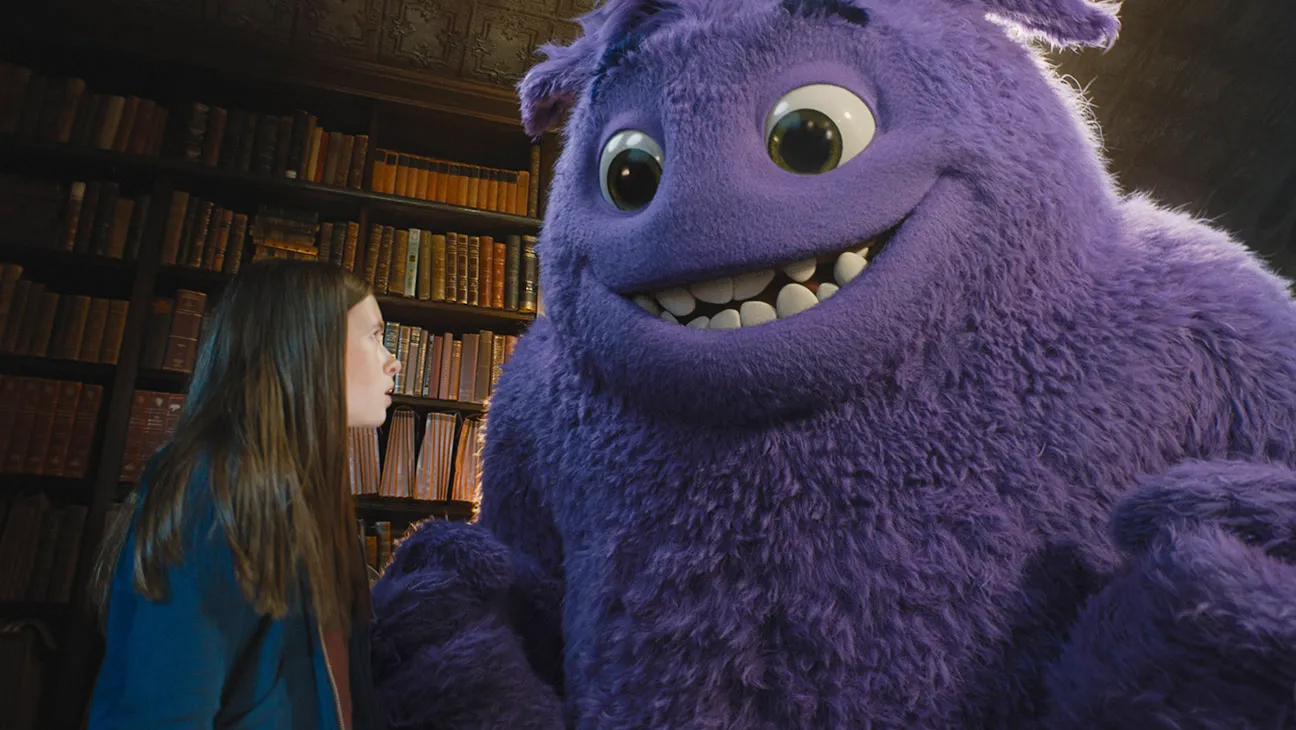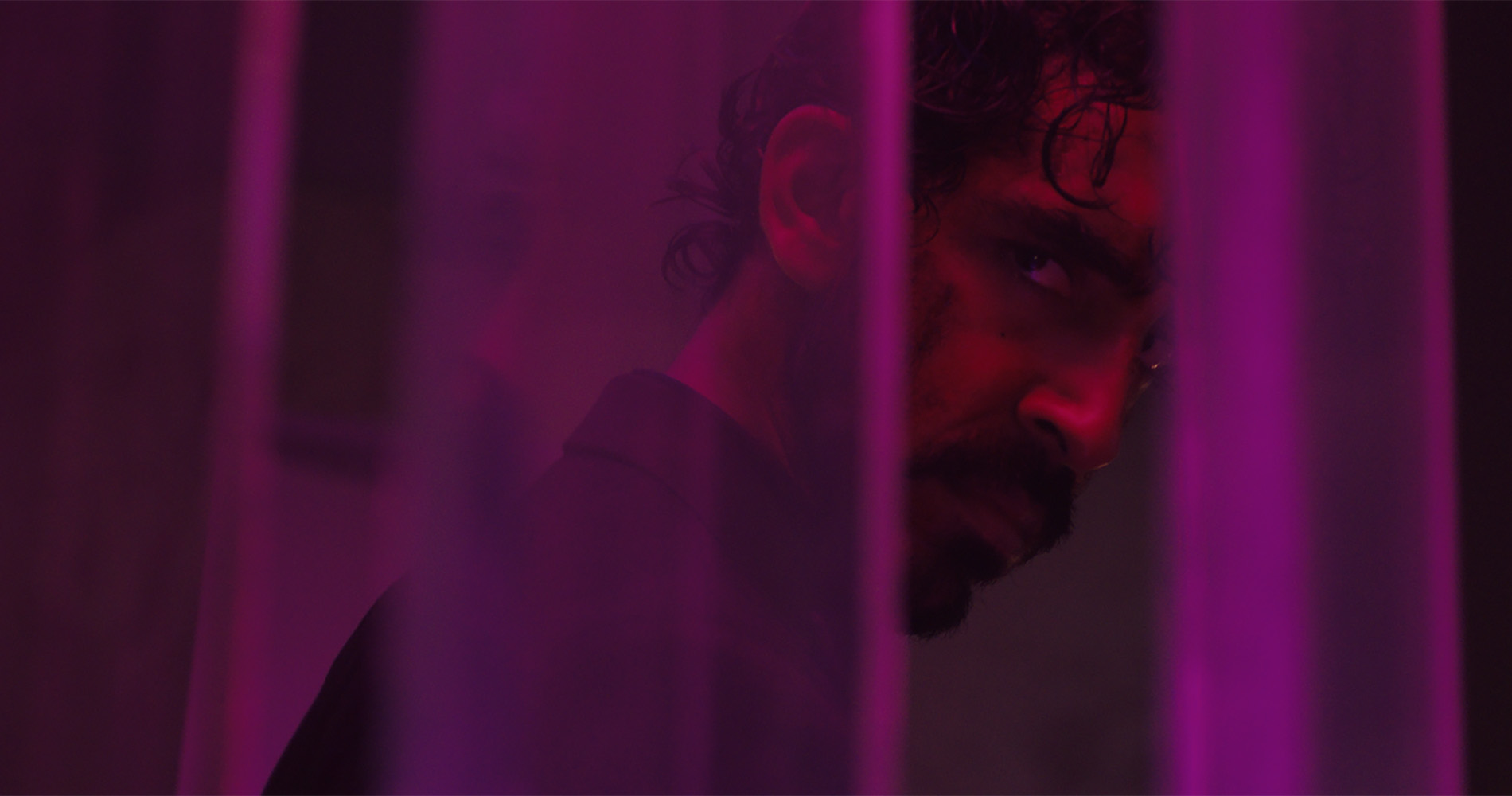Film review: The imaginary friends of ‘IF,’ despite strong acting, are easily outgrown

Cailey Fleming and Steve Carell play Bea (left) and Blue (right) in “IF.” Directed by John Krasinski, the live-action animated film released in theaters Friday. (Courtesy of Paramount Pictures)
“IF”
Directed by John Krasinski
Paramount Pictures
May 17
By Martin Sevcik
May 17, 2024 2:37 p.m.
This post was updated May 21 at 8:02 p.m.
“IF” had the concept, star power and budget to be this summer’s iconic family blockbuster – if it had only met its full potential.
Director John Krasinski’s new film revealed itself in theaters Friday, unveiling the absurd creatures hiding just out of sight amid a tenderhearted family drama. After losing her mother to cancer, 12-year-old Bea (Cailey Fleming) stays with her grandmother (Fiona Shaw) as her whimsical father (Krasinski) undergoes heart surgery. Once she stumbles upon the imaginary friends hiding in her building, she begrudgingly agrees to help caretaker Cal (Ryan Reynolds) find them new homes. This fantastical live-action adventure attempts to balance childlike whimsy and mature themes, but the film’s tonal dissonance and inconsistent writing lead audiences to quickly outgrow the concept.
[Related: Film review: ‘Kung Fu Panda 4’ ends iconic franchise with a feeble kick]
The kooky imaginary friends, ranging from a felt alligator to a royal ghost to a sentient glass of water, are the undeniable highlight of the film. A smorgasbord of familiar voices – George Clooney, Awkwafina, Matt Damon, Blake Lively and many more – endear this ensemble cast to the audience, despite their lean screen time. These characters are a compelling rebuke of Krasinski’s “A Quiet Place” series, where fleshy fanged creatures seared themselves into public consciousness. The fun he evidently had crafting this odd bunch is infectious.
But unlike “Monsters, Inc.,” where the audience tours an imaginary world, these unusual characters are squatting in modern New York City. This raises dozens of distracting world-building questions that are gleefully ignored. This also means the film deals with real-world situations unfit for these imaginary friends, such as Bea’s regular bedside chats with her father about his unnamed heart disease. Unsurprisingly, the pantsless banana and his compatriots are frequently sidelined to give respect to Bea’s non-imaginary struggles.
The filmmakers competently attempt to use common themes to unite these disparate halves. For example, Bea initially insists she is “no longer a kid,” to the mutual chagrin of her father and imaginary friends. But by the end, she understands that childhood is to be embraced, not abandoned – a sweet message her co-stars can once again universally appreciate.
Fleming’s acting similarly bridges this tonal disparity. Bea is written as a spunky old soul – a child who experienced a harrowing loss but who also wins regular quip-offs with Cal. Fleming comfortably fills this role and serves as a pleasant foil to Reynolds’ uncharacteristically jaded character. The self-awareness and charisma that has pervaded Reynolds’ other recent roles was seemingly left on the cutting room floor. This is not a flaw – it helps ground the film’s competing tones, and it makes his performance more distinct than in “Free Guy,” for example.
But there is only so much Fleming and Reynolds can do. A mid-movie dance number featuring a giant red flatulent gummy bear will never sit right alongside Bea’s regular hospital visits. Effectively switching between these modalities requires keen pacing sensibilities, but these are not always present.
[Related: Film review: The action-filled film ‘The Fall Guy’ serves as an homage to Hollywood stunt work]
Other aspects of the film are similarly mediocre. The screenplay often insists that characters state their emotions aloud unprompted, eradicating the potential for the actors’ subtle performances. The soundtrack relies on well-worn tropes to ensure the audience feels a perfectly curated emotion at every point. If a test audience were shown any random scene without music, they could probably guess the exact instruments used in the backing track.
Disappointingly, none of this had to be the case. On occasion, Krasinski, the actors and the animators come together to demonstrate this premise’s full potential. In the film’s best scene, a former dancer uses music from her childhood to reconnect with her long-lost imaginary friend – a ballerina butterfly who adores tea. As an orchestral track bathes her apartment, the dancer stretches out her arms, embracing it. The camera cuts from close-ups to a view of the whole apartment, where the butterfly is seen mirroring her moves, dancing along in nonverbal unity. The audience understands exactly what happened without a single word.
In the next sequence, Bea and Cal attempt a similar maneuver with Blue – a cross between the McDonald’s character Grimace and Sulley from “Monsters, Inc.,” voiced by Steve Carell. Their initial attempt fails in an entirely predictable manner. The audience knows what a successful reconnection attempt looks like, yet the characters have realizations about the process as though it is new information. The magic from the prior scene is lost. The film unceremoniously wades back into the swamp of mediocrity, where it appears to be most comfortable.
“IF” provides a few laughs, and it crafts some memorable characters well suited to Reynolds’ Mint Mobile advertisements. It attempts to craft a whimsical world and simultaneously tell a story of loss and resilience. Under the right circumstances, this could have worked. But ultimately, it does neither.
Much like an imaginary friend, “IF” might amuse audiences in the moment, but it will be quickly forgotten.




